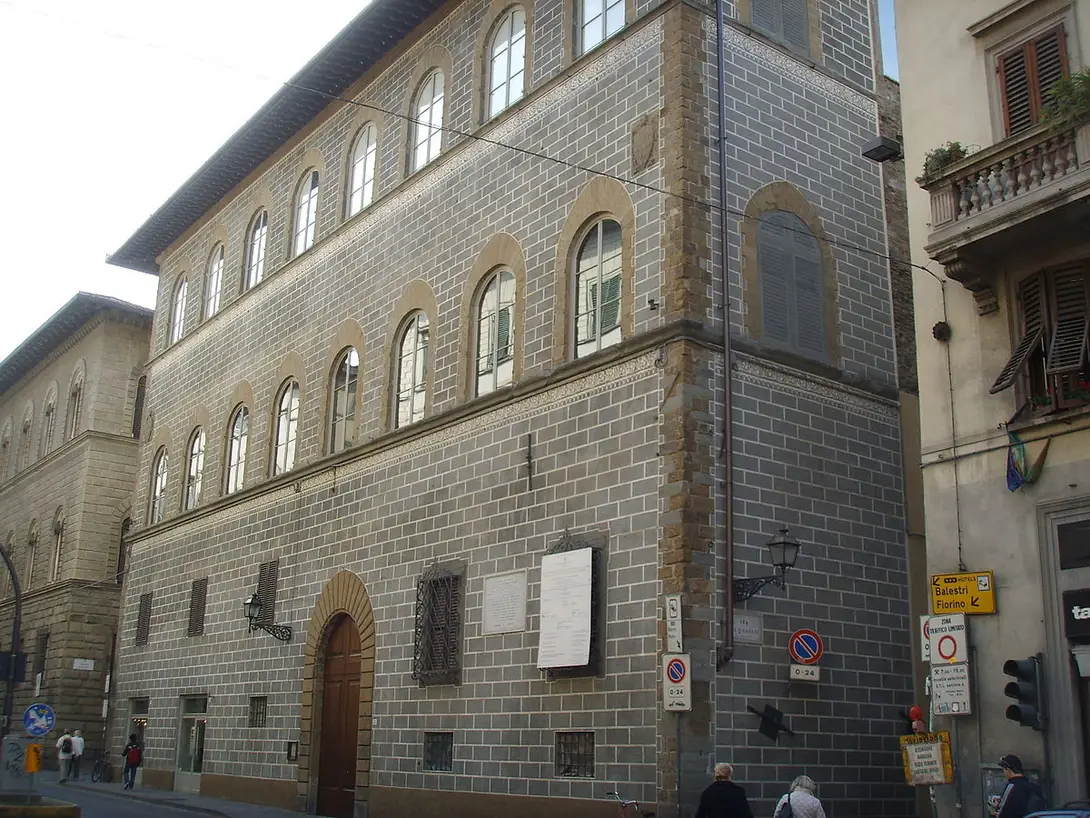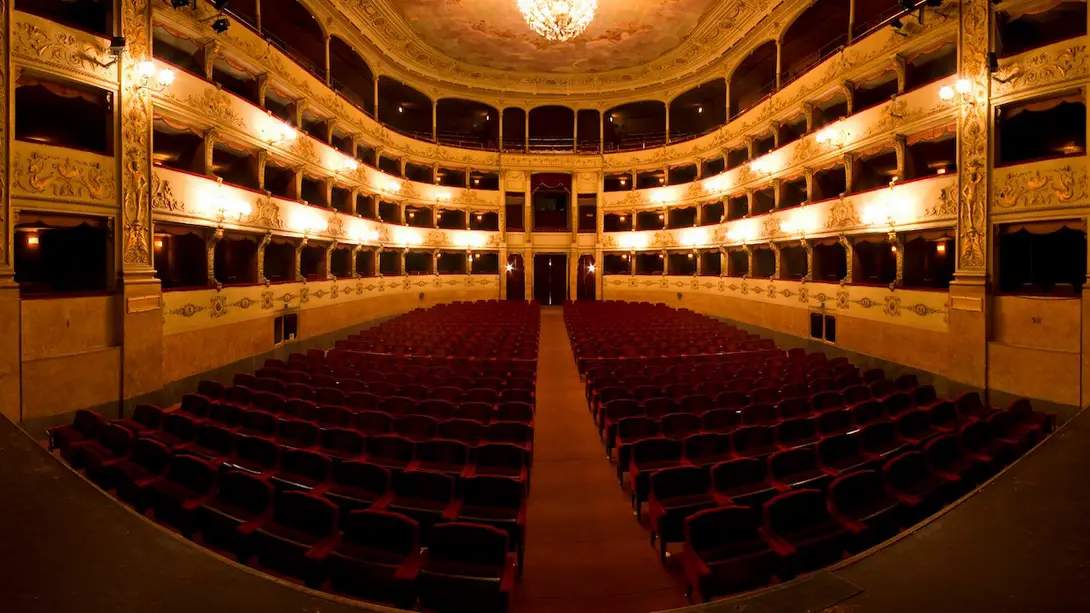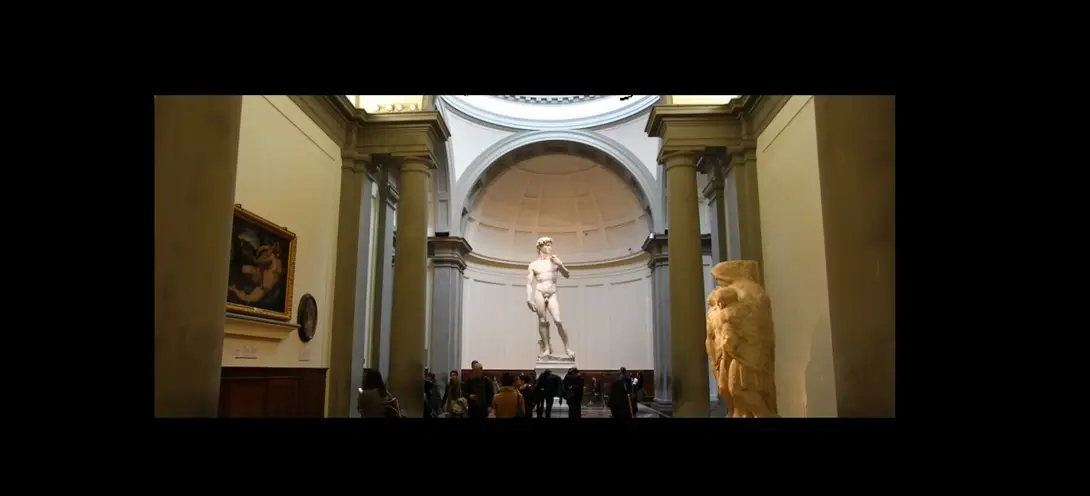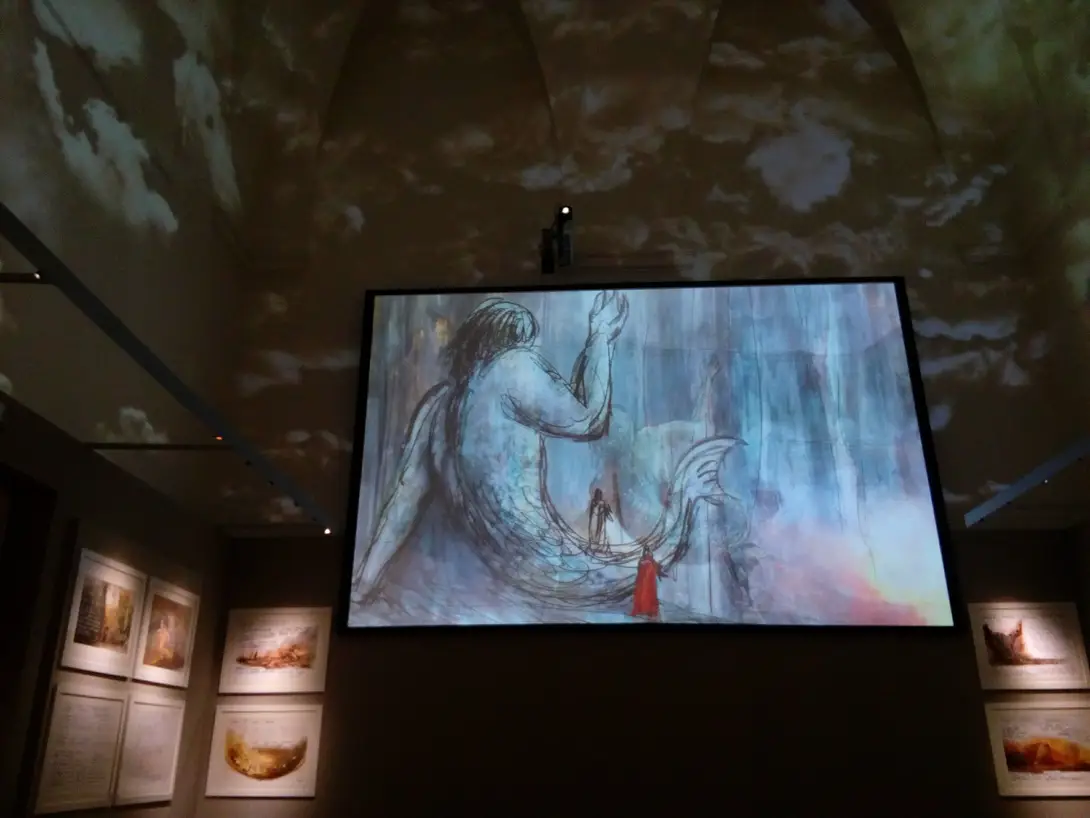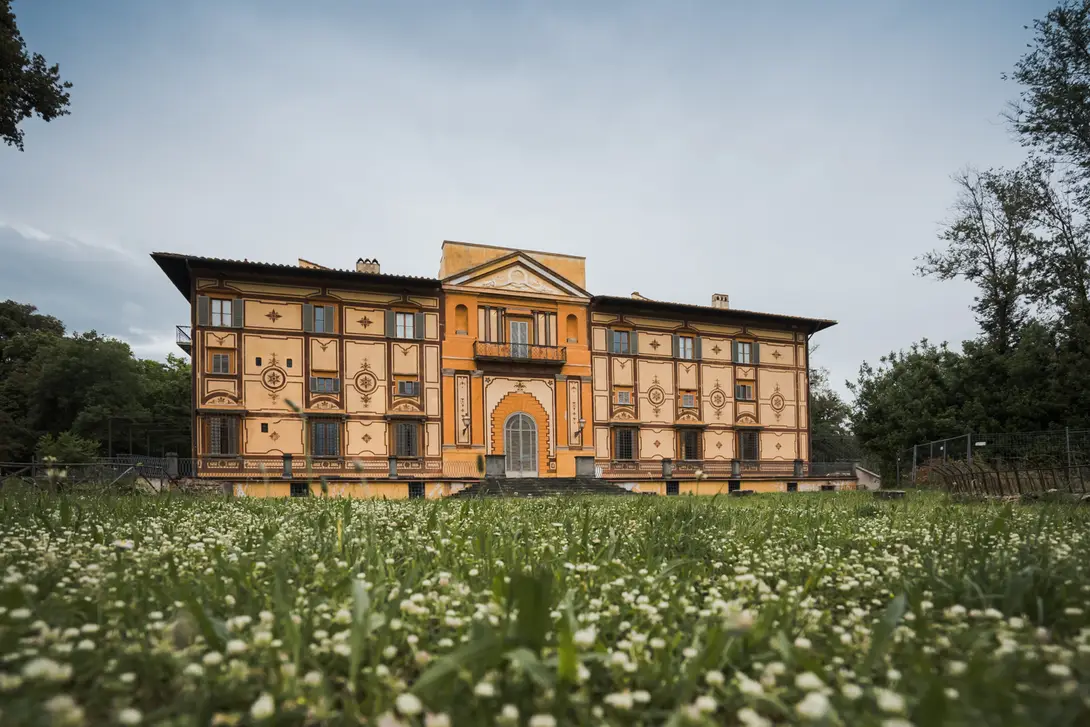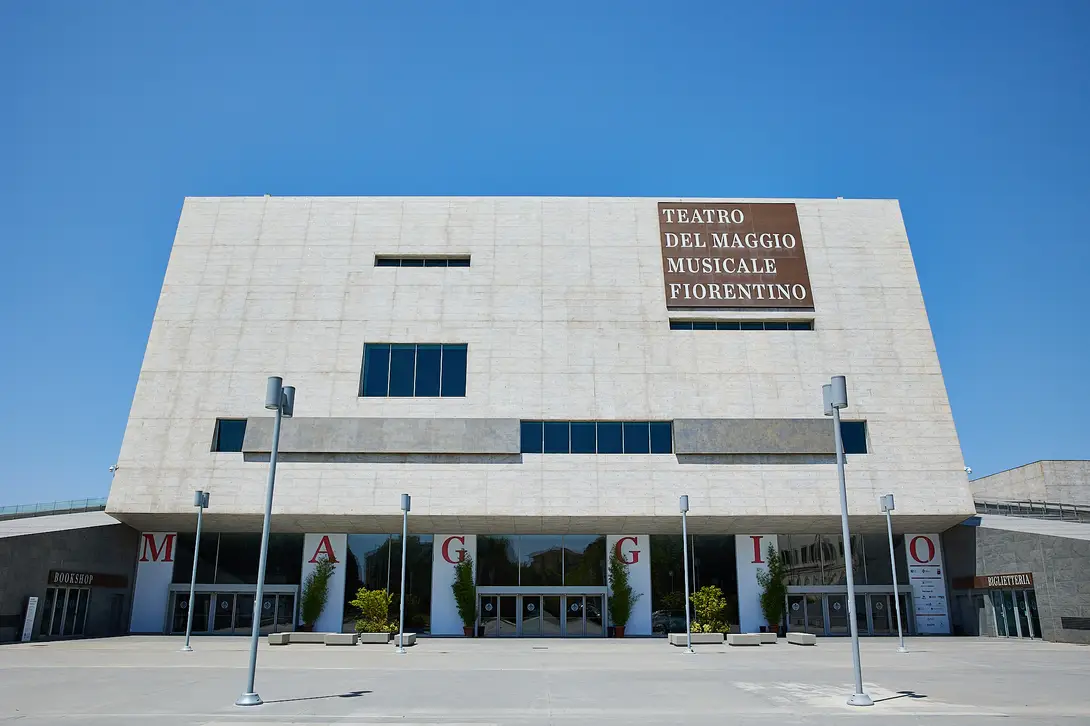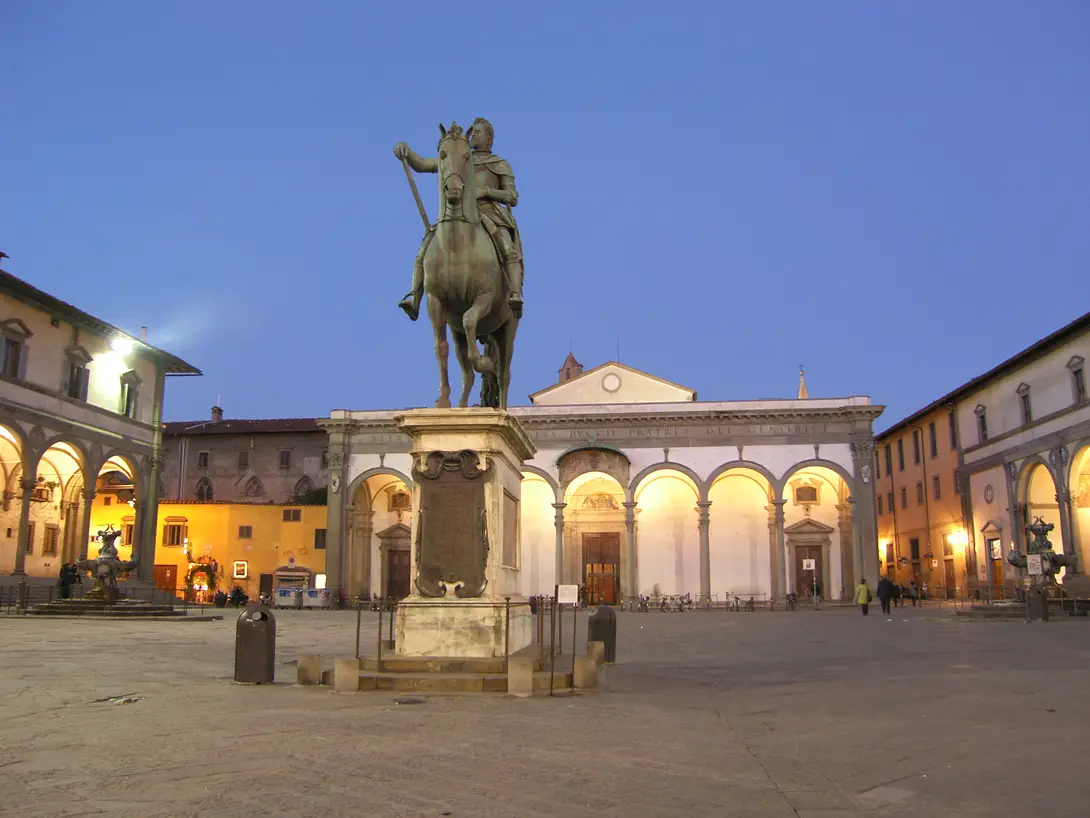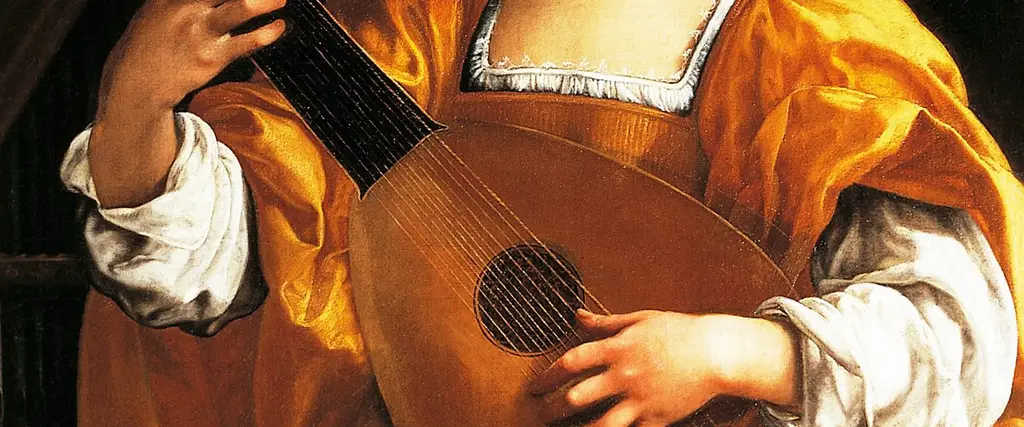
Florence and music, an itinerary through time
This historical-musical route will guide you through the most significant places and moments regarding musical production and innovation, on the traces of what was born in Florence and then reached the whole world, deeply influencing trends and styles.
In the 15th century the entourage of Lorenzo dei Medici created the "canti carnascialeschi", folk-style polyphonic compositions that brought cultured music from the restricted circle of noble palaces and convents to a wider working class audience, on squares and in markets.
A milestone in the history of Western music was set right in Florence in the 16th century thanks to the Camerata dei Bardi, a group of nobles, writers and musicians who used to meet in Palazzo Bardi, the house of nobleman Giovanni on Via de’ Benci. In this context Girolamo Mei, Vincenzo Galilei, Giulio Caccini, Emilio de’ Cavalieri, Jacopo Peri and Ottavio Rinuccini, inspired by the dramatic style of the ancient Greek laid the foundations for a new form of musical theatre: opera.
A new genre that was immediately supported by the Medici court, that protected with great generosity the most outstanding musicians. The first embryonic opera was Apollo and Daphne, to a libretto by Ottavio Rinuccini and music by Jacopo Peri, but officially the birth of opera happened on October 6 1600 in Palazzo Pitti, with the production of Eurydice on the occasion of Maria dei Medici's wedding to Henry IV of France.
Still on the subject of opera, it is worth remembering that a Florentine, Francesca Caccini, was the very first woman to compose one. Francesca, the daughter of Giulio Caccini, was also a singer and instrumentalist, hired in the court staff. Her opera is called The Liberation of Ruggiero from the island of Alcina and dates back to 1625: it was also brought abroad by Francesca herself and toured the European courts.
Also worth remembering is the Hercules in Thebes by Jacopo Melani, a theatrical event set to music that was presented on July 12 1661 on the occasion of the opening to the public of the Teatro della Pergola, supported by the Accademia degli Immobili and one of the most popular theatres of the city to this day. Even this opera was written on the occasion of the marriage between Grand Duke Cosimo III dei Medici and Margherita Luisa d'Orléans.
Another fundamental step in this evolution can be dated around the year 1700, when Florence saw the invention of the forerunner of the piano, an instrument that its mentor, Bartolomeo Cristofori, named fortepiano. Cristofori worked as a manufacturer of instruments at the court of Ferdinando dei Medici and this new creation was greatly appreciated by musicians such as Mozart, Haydn, Clementi and Beethoven. You can admire some examples of it in the Museum of Musical Instruments, at the Galleria dell'Accademia. The museum is located next to the place where today's musicians are trained, the Luigi Cherubini Conservatory which also has a branch in the wonderful Villa Favard, in Rovezzano.
Ferdinando dei Medici used to spend the autumn in the Villa di Pratolino: on the third floor he set up the Teatro di Pratolino, where he gathered under his patronage the most famous musicians of the time; the performances were highly rated and people from all of Europe came to listen to them.
In more recent times Florence was the birthplace of the oldest music festival in Italy, the Maggio Musicale Fiorentino. Vittorio Gui had already established the Stabile Fiorentina symphony orchestra in 1928; thanks to guest conductors and in vogue singers, very high professional standards were reached.
Five years later, Vittorio Gui with the Maggio Musicale Fiorentino created a space open to arts for opera, symphonic concerts, drama and conferences; an event that has since then seen a succession of the most important international conductors, singers, directors and musicians.
Also included in this itinerary is the Museo Zeffirelli, dedicated to the multifaceted activity of the Florentine director, who staged many operas, performed in theatres all over the world, even handling, with artisan skills, the design of sets and also costumes and outfits of the various characters.
And finally a curiosity: in Florence, in the Santissima Annunziata church, you can find the second oldest organ in Italy: dating back to 1523, it is still played every Sunday.
Los lugares
Etapas
Palazzo Bardi
Una targa, sulla facciata di questo palazzo nei pressi di Santa Croce, ricorda che qui nacque la Camerata dei Bardi.
Teatro della Pergola
The Pergola Theatre in Florence was inaugurated 350 years ago to meet the needs of the growing local theatre community.
Ferdinando Tacca was commissioned to design the new theatre, clearly inspired by Renaissance Architecture models:the theatre had a single hall and balconies for single families, which allowed for a more intimate and privileged view of the show. Therefore, the Pergola Theatre became theprototype of the Italian-style theatre.
Its plan is horseshoe-shaped, its stage is very deep and its auditorium wide. Open to the paying public since 1718, the theatre was expanded and, in 1801, the Saloncino (small hall) was added for music and dance.
Many great authors chose this theatre for their operas, including Antonio Vivaldi, Giuseppe Verdi, Eleonora Duse, Eduardo De Filippo.
Galleria dell'Accademia di Firenze - Academy gallery
The Academy Gallery (Galleria dell'Accademia) in Florence is known around the world as the ‘Michelangelo Museum’ (for the statues of David and the Prisoners), but it is actually much more than that.
It stands on the site where two convents originally stood, next to the Academy of Fine Arts, which still has its seat here. The first nucleus of the collection was formed in 1784 with a series of works of art, donated by the Lorraine Grand Duke Pietro Leopoldo; in 1873 Michelangelo's David, a true icon of western art, created by the artist between 1501and 1504, was moved here (from Piazza Signoria, replaced by a copy). Later, other works by Michelangelo arrived at the Accademia Gallery: the Four Prisoners (conceived for the tomb of Pope Julius II), the St. Matthew and the Palestrina Pietà, all unfinished works by the great artist, representing Michelangelo's famous ‘unfinished’.
In the Sala del Colosso is the original sketch of the Rape of the Sabine Women by Giambologna, together with numerous paintings of 15th and 16th century Florentine painting (Paolo Uccello, Botticelli, Perugino, Ghirlandaio, Filippino Lippi). Other important 16th-century paintings are exhibited along the Galleria dei Prigioni and in the Tribuna del David, adjacent to the Giposteca Bartolini, where numerous plaster casts by the famous 19th-century sculptor (and other contemporary artists) are collected.
In the Halls of the 13th and 14th centuries, numerous paintings can be admired, including works by important followers of Giotto (Tadeeo Gaddi, Bernardo Daddi, Orcagna) up to the International Gothic of the early 15th century. Don't miss the Museum of Ancient Musical Instruments (from the nearby Luigi Cherubini Music Conservatory, and even earlier from the Grand Ducal and Lorraine collections): about fifty pieces, including a viola and cello by Antonio Stradivari, a spinet and a forte-piano by Bartolomeo Cristofori, the inventor of the piano.
Franco Zeffirelli Foundation
The Franco Zeffirelli Museum in the building complex of San Firenze houses more than 250 works by the Florentine-born Maestro, including scene sketches, drawings and costume designs. It is an unusual museum, dedicated to his activity as director, scriptwriter and also costume designer, who tried his hand at many disciplines: Theatre, Opera and Cinema.
The exhibition is organised chronologically and illustrates the development of theatre productions and film productions which, accompanied by set photos, exemplify the main stages of Zeffirelli's artistic parabola. The sketches, real paintings, that the Maestro made with extreme care and richness of detail, are very fascinating. The room dedicated to the project, which was never completed, on the mise en scène of Dante's Divine Comedy is fascinating.
In a series of rooms it is also possible to see films with footage from opera performances, interviews and excerpts from Franco Zeffirelli's films.
Villa Favard
Having bought the villa in the second half of the Nineteenth Century, Baroness Favard commissioned Giuseppe Poggi to carry out the works for the modernization and embellishment of the building and the garden. The architect designed a stable, a new access road on Via Aretina and the building of a chapel, later decorated with frescoes by Annibale Gatti and Giovanni Duprè.
The park was renovated according to the typical English-style plan and, besides a large number of native plants (oaks, holm oaks),several trees with an exotic taste were planted, including the cedars of Lebanon and magnolias.
Two greenhouses made of iron and glass were built to give shelter to lemon trees and tropical plants.
When Banoness Favard died (1889), a period of decay began, which reached its climax when the German troops occupied the villa during the Second World War. In the Seventies, the opening of Via Rocca Tedalda and the splitting up of the entire property definitively altered its original structure, separating the villa from the large access road on Via Aretina , from the patrician villa and from the park.
Teatro del Maggio Musicale Fiorentino
The new Opera House of Florence is an avant-garde music center for all of Europe. The “Park of Music and Culture”, which comprises the theatre, the auditorium and an open air amphitheatre, was planned by Paolo Desideri in 2008; it is home to the Maggio Musicale, the most important music institution of Florence.
Pratolino Medici Park
On the road connecting Florence with Bologna is a beautiful park that is also a Unesco heritage site: the Parco Mediceo di Pratolino
In the second half of the 16th century, Francesco I de’ Medici commissioned Bernardo Buontalenti to build a villa (later demolished) and a surrounding park; the latter attracted great interest at the time because of the unusual artificial grottoes, water tricks and statues, and was immediately described as “the garden of marvels”.
After Francesco’s death the park had a chequered history until it was bought by the Russian prince Paul Demidoff in the 19th century. He restored the remaining Renaissance elements, including Giambologna’s colossal Apennines statue overlooking a small lake. Inside the statue there used to be grottoes with decorative features, frescoes and water tricks. The decorations have been lost, as have those in Cupid’s Grotto, although there are still a few sculptures, pondsand grottoes dotted around the park. The only building that has survived to the present day without major modification is the chapel, built by Buontalentiin 1580.
This park is the ideal place for a day out with your children: you can have a picnic on the large lawns, walk or have fun at the playground and also walk your dog.
The park can be reached by bus 25A or 307A, direction Pratolino.
Piazza Santissima Annunziata
The Piazza della Santissima Annunziata is characterised by the Renaissance aspect which Brunelleschi conferred in it with the construction of the colonnade for the Ospedale degli Innocenti (Museum). The elegant harmony of the hospital building conditions the entire square, and the colonnade itself is later repeated in the Loggiato dei Serviti, and in the façade of the church. As a result Brunelleschi’s design assumes a certain urbanistic importance, underlined by the fact that this square is one of the few points of the city from which one can see the cupola of the Cathedral, the monumental symbol of the fifteenth century city.
The square has also always played a significant role in the religious, cultural and economic life of Florence, which is closely related to the religious institute of the Servants of Mary. In fact the presence of an image of the Annunciation which is believed to be miraculous has made the church of Santissima Annunziataan important centre of devotion, and a destination for pilgrimages and processions. As well as this, the fact that in Florence the feast of the Annunciation (25 March) coincided up until 1750 with the start of the new civil year, made the square the obvious choice for the celebration of this holiday which was both civic and religious.
The square is dominated in the center by the equestrian monument of Ferdinando I de' Medici, Grand Duke of Tuscany, by Giambologna and finished by his pupil Pietro Tacca, who was also responsible for the two side fountains (1629) depicting sea monsters. Also on the square, at the corner of the church facade, is the National Archaeological Museum of Florence, one of the most important in Italy, with valuable collections of Egyptian, Etruscan and Greco-Roman art.
This square also hosts one of the most typical traditions, theRificolona. This Florentine Feast is held every September 7th, the night before the Nativity of the Virgin Mary.
